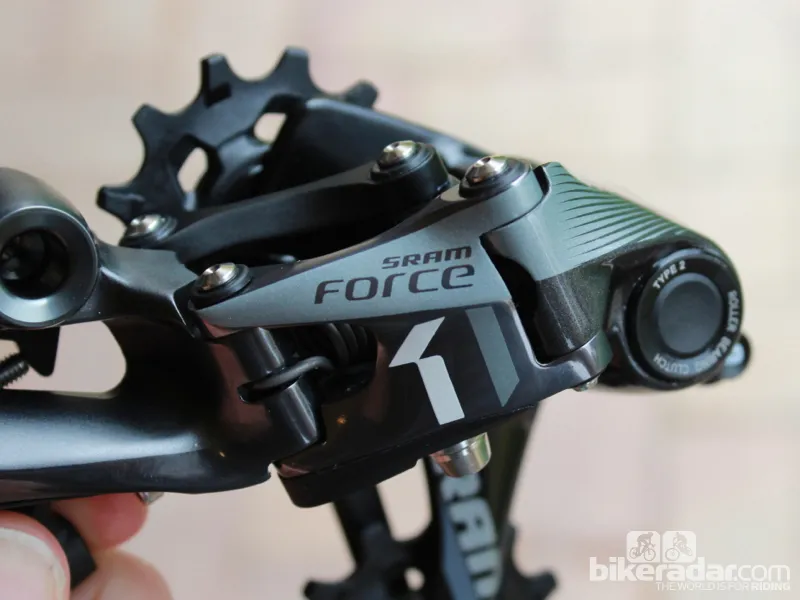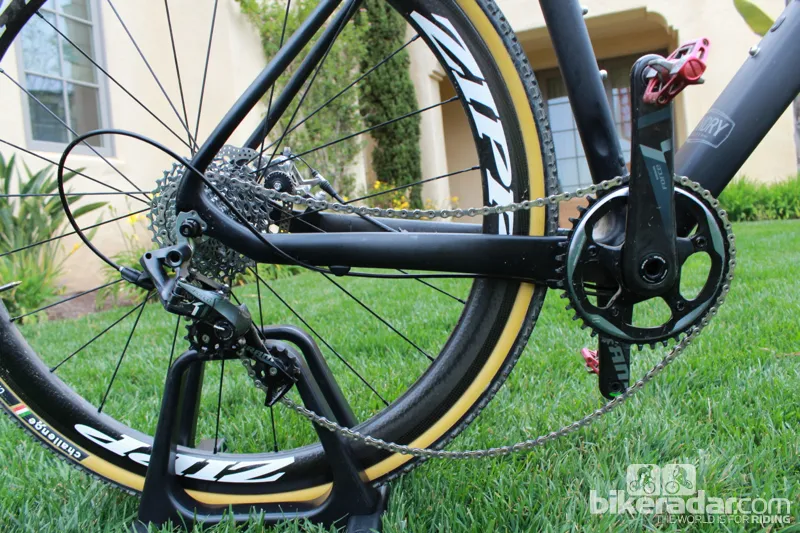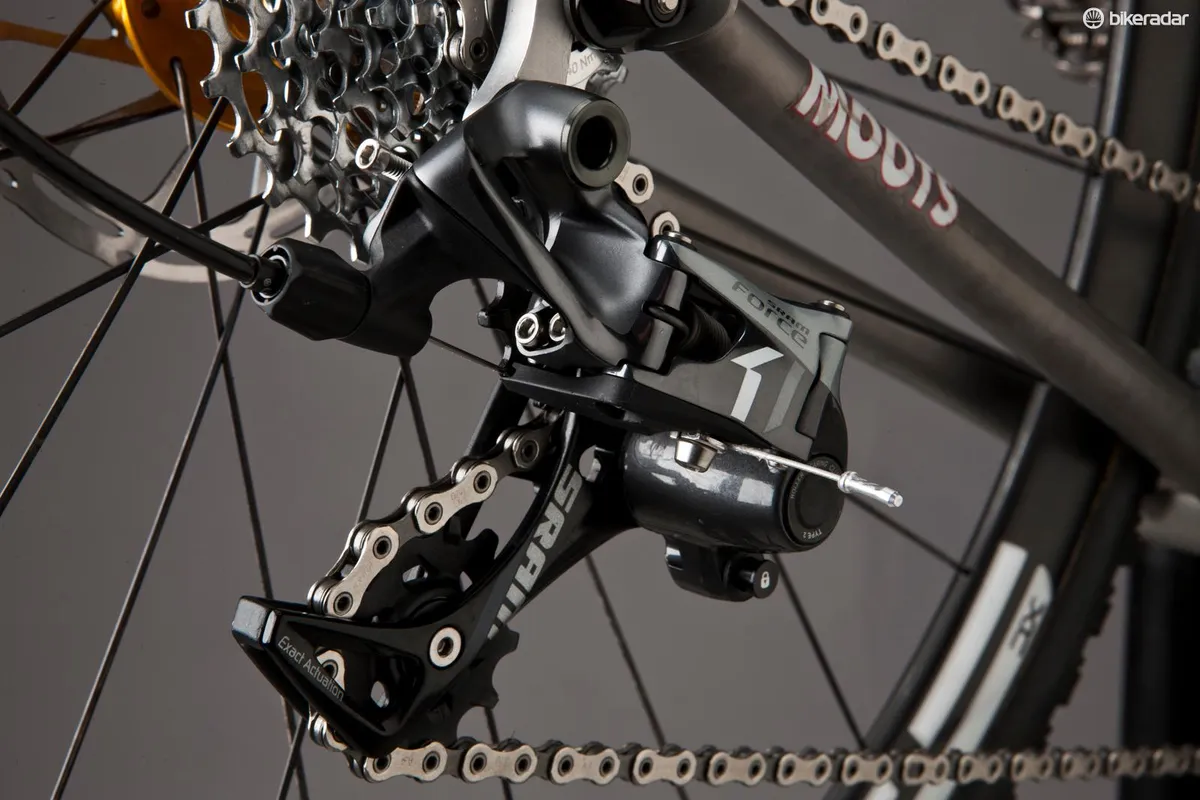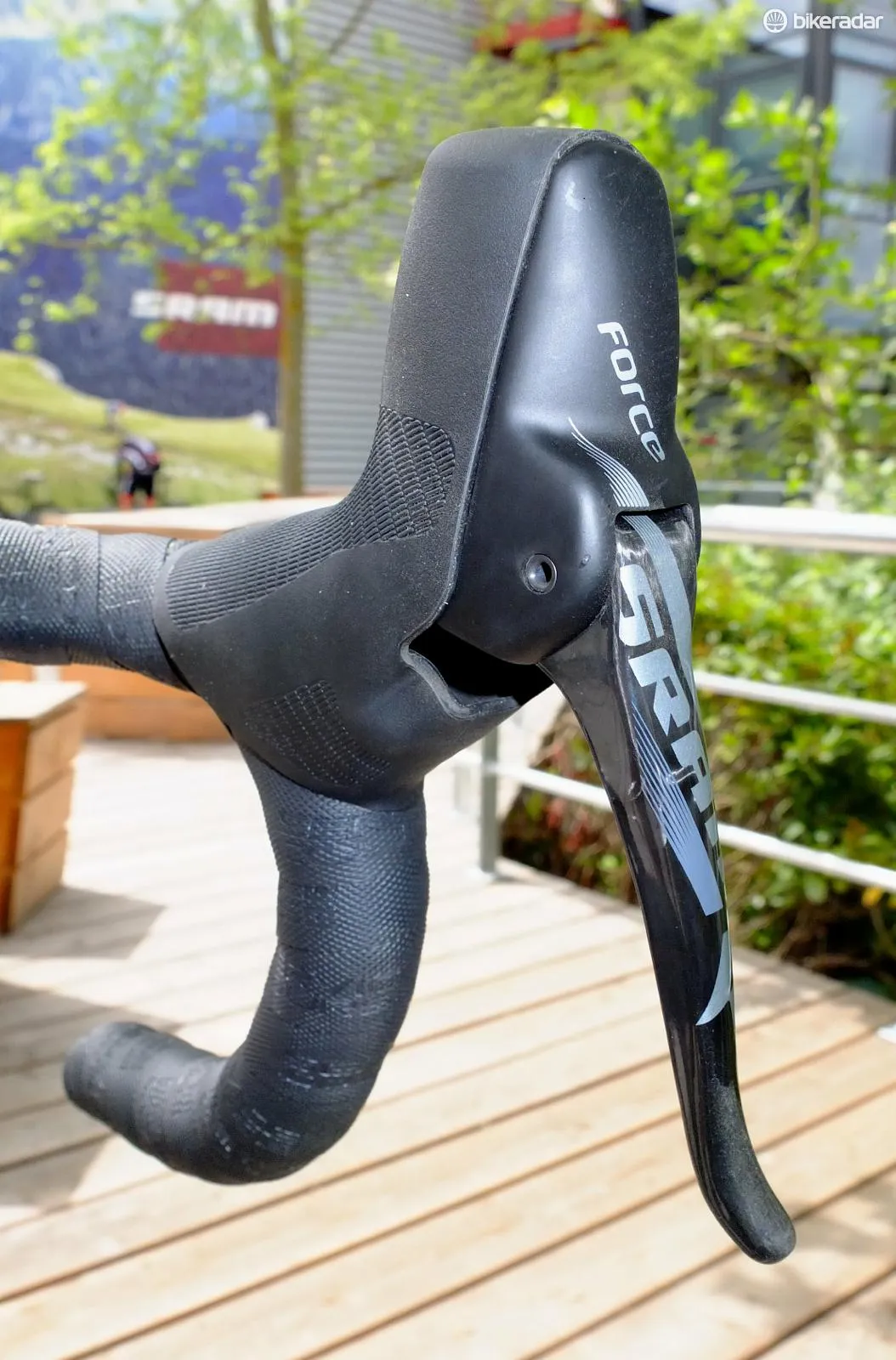For a few cyclocross testers who thought themselves “two-ring guys” — any benefits of a single ring in the past was always lost in the lack of gear options and added bits and pieces to help keep the chain on — the CX1 one-by cyclocross group has proven to be a bit of a gamechanger.
SRAM’s Force CX1 group uses technologies pioneered in the XX1 mountain bike group and have been cleverly adapted to suit the needs of ’cross. There are a number of different gear combinations available that come close to spanning the gears available a double-ring setup, but not quite.
For mountain bikers who have ridden with a clutch derailleur, the CX1 rear will feel reassuringly firm. For roadies and ’crossers who have not, the one-ring system with its taut chainline is a small revelation. When the bike is bouncing up and down over rough terrain — or when you drop it harshly before a remount — the chain is eerily silent, reminiscent of a belt drive instead of a metal chain. But the metal chain — either a 10- or an 11-speed — is most certainly there, it’s just held tight by the brawny CX1 rear derailleur, which is basically a SRAM Type 2 mountain bike derailleur modified for ’cross.
SRAM’s new Force CX1 cyclocross drivetrain can be purchased in pieces, with only the rear derailleur and the X-Sync chainring necessary for a conversion to a 1x group that works with either 10- or 11-speed SRAM systems. (Read our experiences with a minimal CX1 conversion with SRAM Force 10-speed shifters here.)
After a few weeks of earnest testing on the cyclocross course, here is how we found each part of the CX1 group to perform.

CX1 clutch derailleur
The engine room of this system and modeled closely on the XX1 rear derailleur, the CX1 version incorporates minor design alterations like cable routing, cage length and pulley size. The CX1 derailleur’s pulleys are larger and sport X-Sync narrow / wide teeth much like the chain rings. This improves shifting precision and speed. The clutch mechanism helps to keep the chain in place by pulling back on the chain and virtually eliminates chainslap, which makes for a much quieter ride. This derailleur is heavy, about 100 grams heavier than a standard Red22 derailleur, but the performance benefits are well worth it.
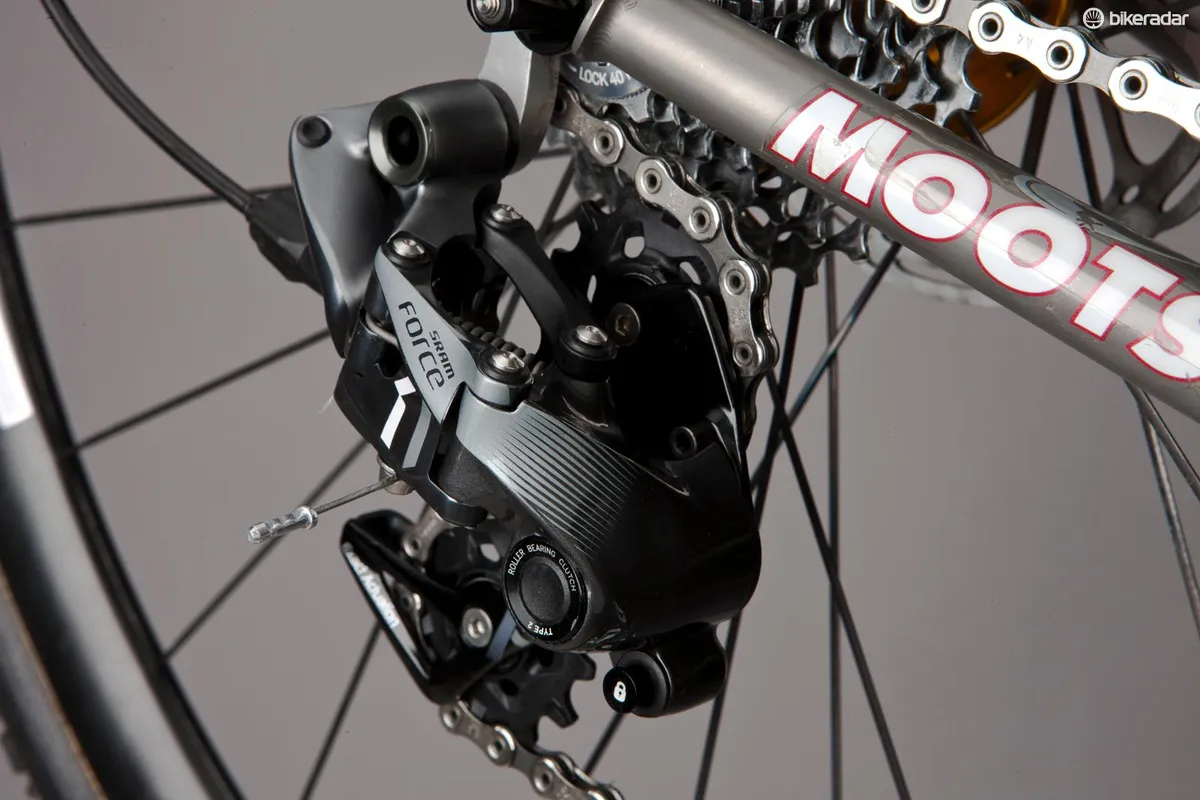
CX1 chainring
Once the need to shift between chain rings is eliminated, the design of the chain ring can focus on keeping the chain on. The X-Sync chain ring has a narrow / wide tooth design that keys into the respective links of the chain; this dramatically reduces side-to-side motion of the chain and when incorporated with larger teeth it’s very hard to throw the chain. The X-Sync chain rings are offset to the inside a little to improve the overall chainline and the design of the teeth guides the chain on nicely regardless of which gear is selected. Mounted on the outside of a standard compact crank, the ring sits dead center over the spider. The rings come in two-tooth increments from 38 through 46, and are 110 bcd compact, so they can be used on any standard compact crank.

CX1 levers
SRAM took the Hydro 22 levers back to the drawing board and it shows. Braking performance is noticeably better than before, ergonomics are improved and shifting action is even a bit lighter. The left lever on the CX1 group is a stock Force 22 hydro lever with the shifting guts removed, so it’s just a brake lever. The right lever is a standard Force Hydro 22 and sports some new design cues that are carried through the whole range. We appreciate the smaller shift paddles for more finger clearance when braking.
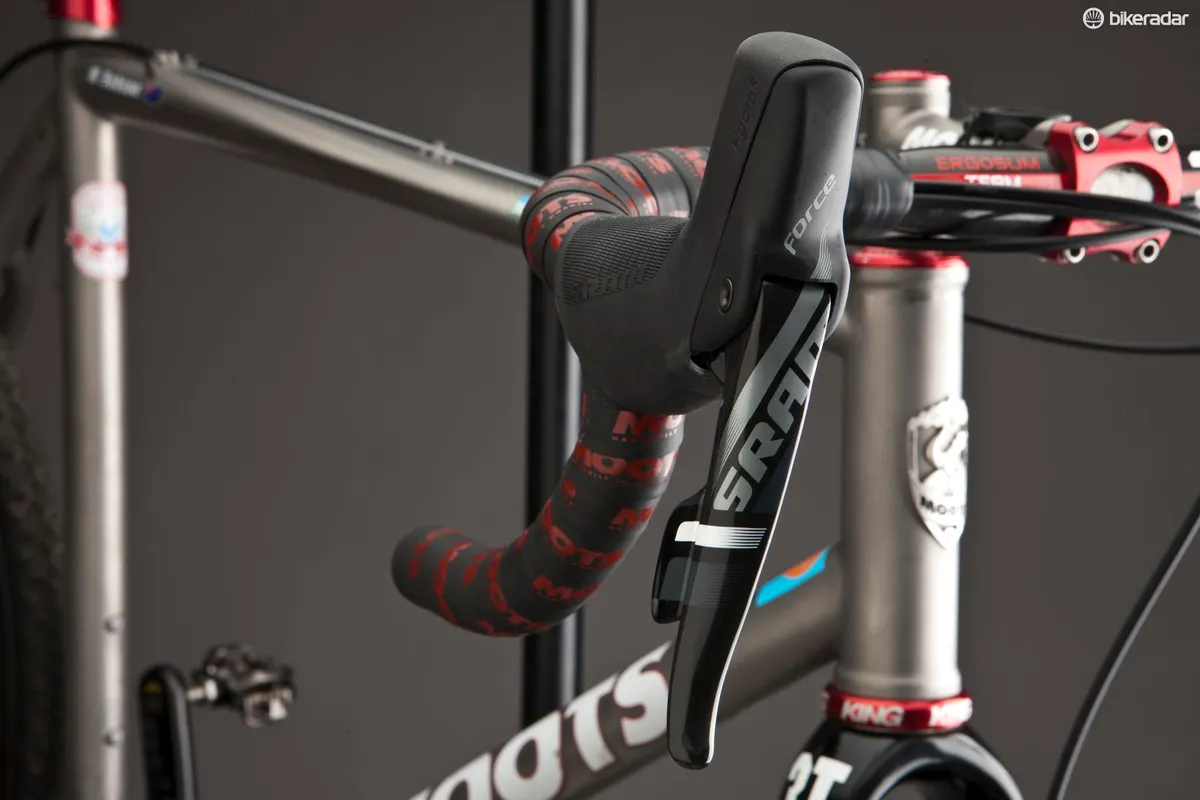
CX1 calipers
While they were in redesign mode, SRAM made subtle and effective changes to the calipers, the most noticeable being ease and effectiveness of brake bleeding. When setting up the brakes they need to be bled exactly once, which is as is should be. After that performance is consistent and reliable. The force level calipers are almost the same as Red, the only difference being graphics and the substitution of stainless hardware instead of titanium. The pad return springs are improved and better track pad position even as the pads wear.
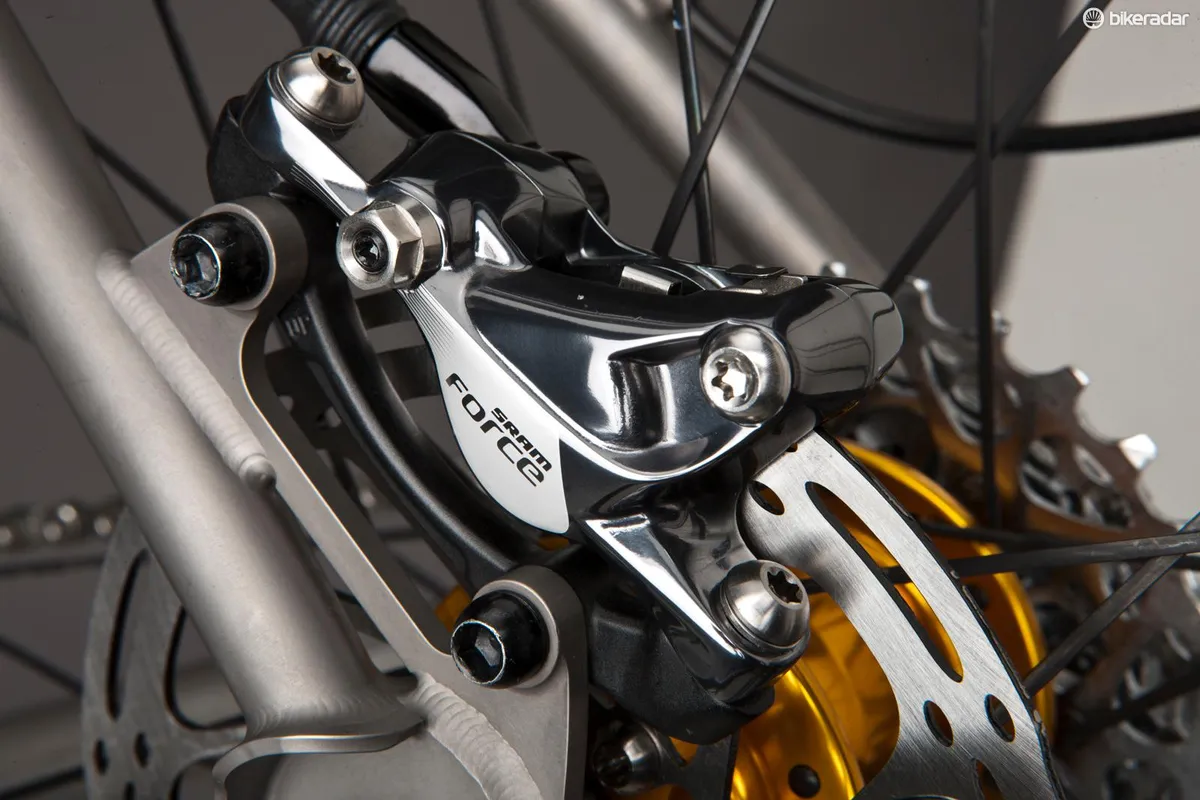
CX1 crank
Nothing to rave about here. A good old Force carbon crank with 110 bcd chain ring mounts. This workhorse crank will endure the rigors of cyclocross and come back for more, but at over 600 grams including the ring it’s a prime candidate for upgrading.
CX1 chain
Once again standard issue. The PG-1170 chain is not CX-1 specific and could be replaced with Red22 or XX1. A word of caution with CX1: regular chain replacement is recommended, as an overworn chain could decrease the reliability of the system. But we all do that anyway, right?
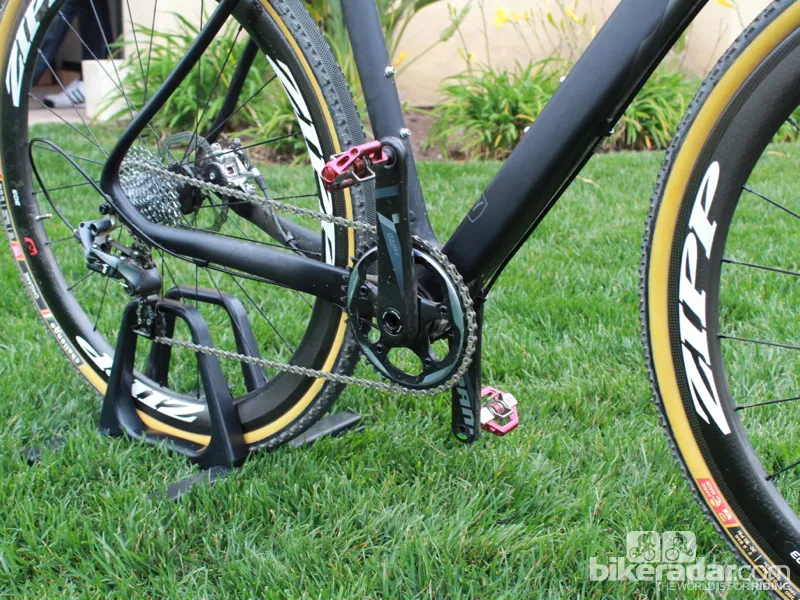
Bottom line
What this all adds up to is a purpose-built, single-ring cyclocross group that performs well with low maintenance. Despite our best efforts we only managed to throw the chain once, and that was when a bike was completely packed with peanut-butter mud and, perhaps, a clump of mud got caught on the chain ring and lifted off the chain. The chain ring has shown minimal wear even with some serious abuse and the whole system is tough, reliable and simple.
The small bit of bad news is that Force CX1 with hydraulic brakes weighs more than a double-ring Red22 Hydro setup by about a quarter of a pound (113g), which kind of puts a damper on things. But considering almost all that weight gain is in the crank and derailleur, the weight is either essential or upgradeable. If SRAM comes out with a Red-level CX1 group it would certainly be a lot lighter. Comparing Force CX1 to two-ring Force paints a different picture; sure, the derailleur is heavier ( 80g), but you're saving the weight of one ring ( 35g), the front derailleur (85g) and a little steel cabling (a few grams).
A common question with one-by systems is whether the single ring can offer an adequate gear range. While you can use any cassette with CX1, it comes with the generous 11-32, which in our experience is plenty for the vast majority of cyclocross courses and conditions, provided you select the appropriate front ring. We tested a 38, a 40 and a 42, and would recommend either of the two smaller ones for cyclocross. With the 40t ring, we found the gear small enough to inch up steeps in the 32t cog but we never spun out when on ’cross courses. It isn’t too hard to run out of gear on paved downhills, but that isn't the target application of this group. With that wide range at the cassette comes some bigger jumps in between gears than on a standard cassette; some testers were mildly annoyed with this, but others didn’t notice.
Perhaps what we like best about CX1 besides the clutch-style derailleur is the compatibility. SRAM isn’t forcing this is a ‘complete group or nothing’ situation; an upgrade of a rear derailleur and an X-Sync chain ring is a solid option for ’crossers with a SRAM group who are looking to move to a single chain ring.
Pricing and weights
- Force CX1 Rear Derailleur - $235 / €209 / £178, 261g
- Force CX1 GXP Crank (chain ring and BB cups not included) - $207 / €184 / £157, 710g
- Force CX1 BB30 Crank (chain ring and bearings not included) - $249 / €221 / £189, 542g
- Force CX1 X-Sync Chain Ring - from $126 / €112 / £96 to $152 / €135 / £115, 70-100g
- Force CX1 Left Brake Lever - $113 / €100 / £86, 119g
- Force CX1 Right Shift/Brake Lever - $193/ €172 / £147, 158g
- For Rear Derailleur, GXP Crank, Chain Ring and Levers, this totals $874 / €800 / £664

